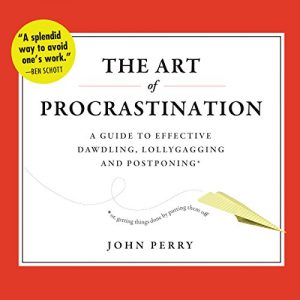
But let’s not gloss over the facts – working by yourself, juggling the priorities of different clients is HARD!
Having worked from home for nearly two decades, I’ve seen a lot of changes – both in the technology available and, more recently, the change in attitudes to and perceptions of remote and freelance work.
So, what have I learned, the hard way?
1. Be brave and admit that you work remotely/freelance
For a long while, I was reluctant to admit I wasn’t an employee somewhere or running my business from a swanky office. I imagined that my work would somehow be judged as inferior because I wasn’t sitting behind a corporate desk – and some clients definitely thought like this!
Well, this may have been a fair reflection in the past, but in the current climate, far from it being a concern, for the majority of clients it is seen as a positive asset. They don’t have to put up with my singing, for a start, or my loud voice, my lateness due to the traffic, or battle me for the thermostat!
If you’re hitting deadlines and quality standards, is there really any need to be judged on the when and where of completing the work? Be judged on your output – how you do it is your business. Be open to having your work critiqued and measured more often, though, especially in the early stages, when trust is being built. Once that’s been established, the ‘keepers’ will be happy to let you get on with it – and you can take a call on whether to continue with the rest (see 2. below)!
2. Be brave and say ‘No’
This a hard one for the freelancer, when there’s always a worry that the work will dry up. But it was when I learned to stop saying ‘yes’ and to turn away the work that wasn’t bringing me satisfaction or allowing me to grow that I became the busiest I’ve ever been – with rewarding, creative work from clients I really get on with and who value what I do. Closing the door on the negative seemed to miraculously generate positive opportunities I couldn’t have imagined!
But of course, it wasn’t a miracle. It was simply that when I said ‘no’ to the work and clients that weren’t a fit, it freed up more time to pursue those opportunities that had caught my eye when I was just too busy to do anything about them.
3. Be brave and say ‘Yes’!
Hang on a minute – didn’t I just say…?
Well yes, and it might seem like a contradiction – but there is nothing wrong with taking a punt on something that comes your way unexpectedly, as long as it doesn’t put you back in a destructive spiral of over-stretching yourself.
How often have you heard someone – and I hate to say it, it is frequently a woman (when did we get so fearful?) – mention that they were offered an opportunity, but turned it down, as they just didn’t think they’d be up to it, even though they’d have liked to?
Whilst honesty about our actual abilities is fundamental to our integrity, until the self-belief comes (and it will – as I tell delegates on courses, it’s just muscle memory!) getting on with it and faking confidence until you feel it, can help you over that little hill of self-doubt.
Back in the day, I was asked to create a price catalogue using Publisher. At that time, I had no DTP skills to speak of, but I knew I had the software somewhere on my PC. So I told them this, and agreed to give it a go. It wasn’t without its issues, but I learned, and it opened the door to a marketing pathway I might not otherwise have ventured down for some time…
A little more recently, a favourite client asked me to help write an important bid. It wasn’t something I had done before, but I really enjoy working with this company, and my new policy of saying ‘no’ had freed up time to grasp new opportunities for growth, so…
Turns out I was pretty good at it (their words!). Turns out, I really liked the work! So now I support them with all their bids, and we always achieve top technical marks, even if we don’t always win on price (what can I say – gold-standard training doesn’t come cheap!).
I’ve learned that I need to actively seek projects that test and stretch my skills – it benefits my clients, as well as myself.
3. Put things off
Our social-media-driven world has trained us all to react instantly – but mostly it really isn’t necessary, creates stress, and is often counter-productive. How many times have you stopped one task to jump straight on a request, only for the brief to change mid-way through completion?

Book by John Perry – The art of procrastination. Great guide for remote working
In John Perry’s book “The Art of Procrastination”, the Stanford professor of philosophy extols the virtues of getting things done by putting things off. I tried it, and it worked a treat – I would say that this is one of the key things that enables me to keep productivity levels high whilst maintaining my standards (and I am my harshest critic!).
When you think about it, it really is just a way of prioritising and then keeping focussed on a task.
4. If you just can’t resist checking your email every 10 minutes…
Here’s a tip that works for me – in your mail client, create folders within folders. How you name them doesn’t matter (I use things like ‘No, Coffee Can Wait, Do This First’). Create rules to send emails from certain people or with certain subjects to the specific folders and then CLOSE THE FOLDERS!
This allows me to work with focus on a particular project for a designated amount of time (I work for an hour at a time). I then turn a rule off, if I want emails to come straight back into my inbox again.
5. Find a network
Working alone, I found that I needed like-minds to bounce thoughts around with. I’ve been so fortunate (but see 2. above!) and have lovely clients with whom I have the sort of collaborative relationships that enable us to brainstorm ideas and utilise each others’ expertise on a whole range of issues.
Someone once called me a ‘pollinator’ and it stuck with me – I really enjoy connecting people together that may be able to help each other out – and creating this environment means there is usually someone there to support you too!
A wonderful, albeit non-commercial example of this is the website Helpfulpeeps (see the link in the comments below) – humans are helpful by nature, and this initiative is lovely way to connect and ‘Pay It Forward’.
Finally, here are some tools that I really couldn’t do without:
Audible – love this for listening to business books that I know I just wouldn’t get round to otherwise…
Trello – just brilliant for organising blog research, social media post ideas, ideas for that DIY project… My favourite feature is that you can send a link to something online straight to Trello. Has saved me so much time!
Slack – can be a bit hard to follow the threads, I know, but for just keeping in touch with the team and generally letting them know they’re appreciated and included in what’s going on, this is really handy.
Harvest – simple, intuitive tool for tracking your time and invoicing. Saves you from all those uninvoiced 5 minutes that have turned into hours by the end of the month!!